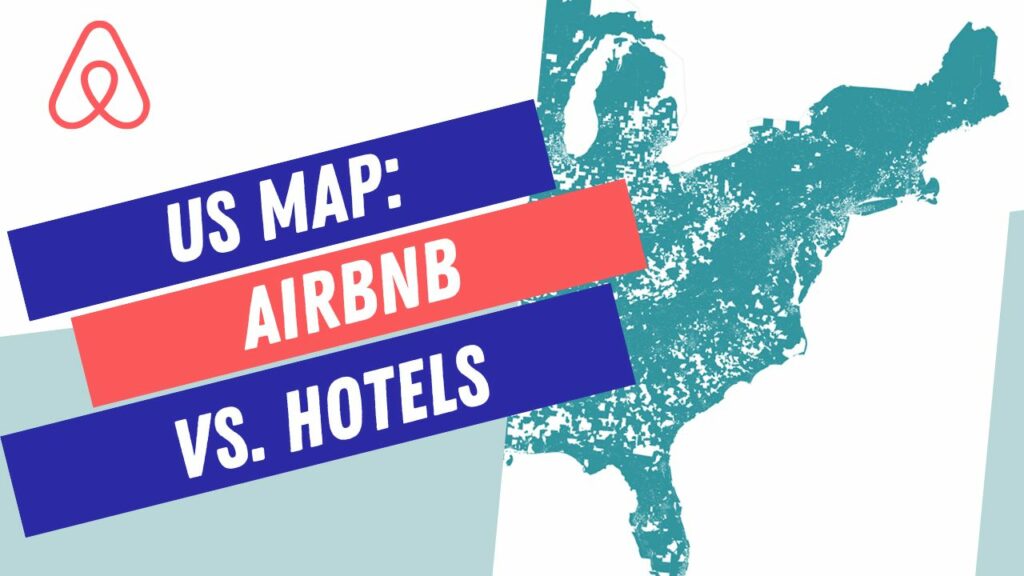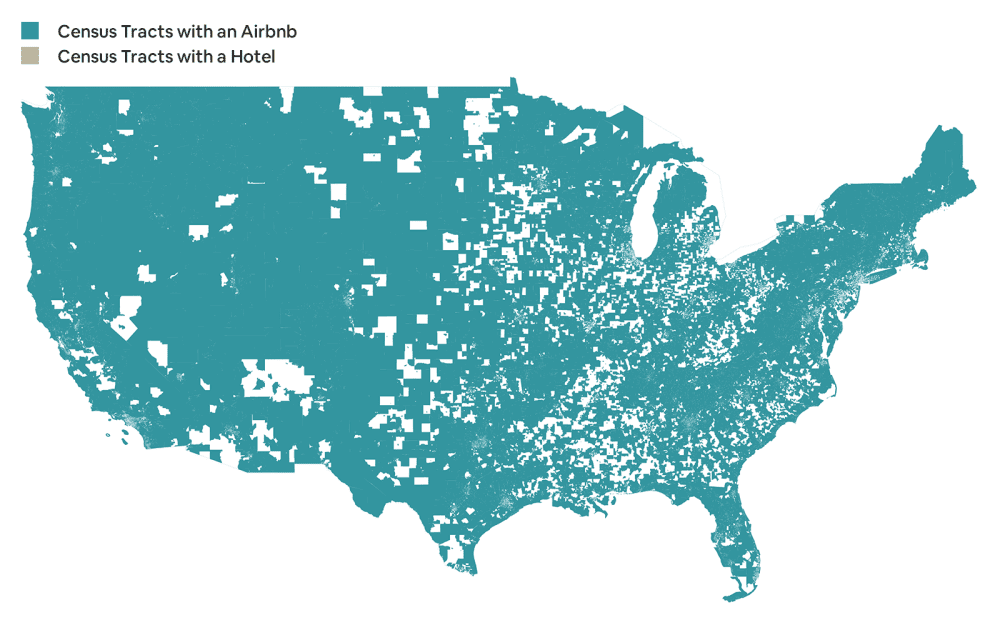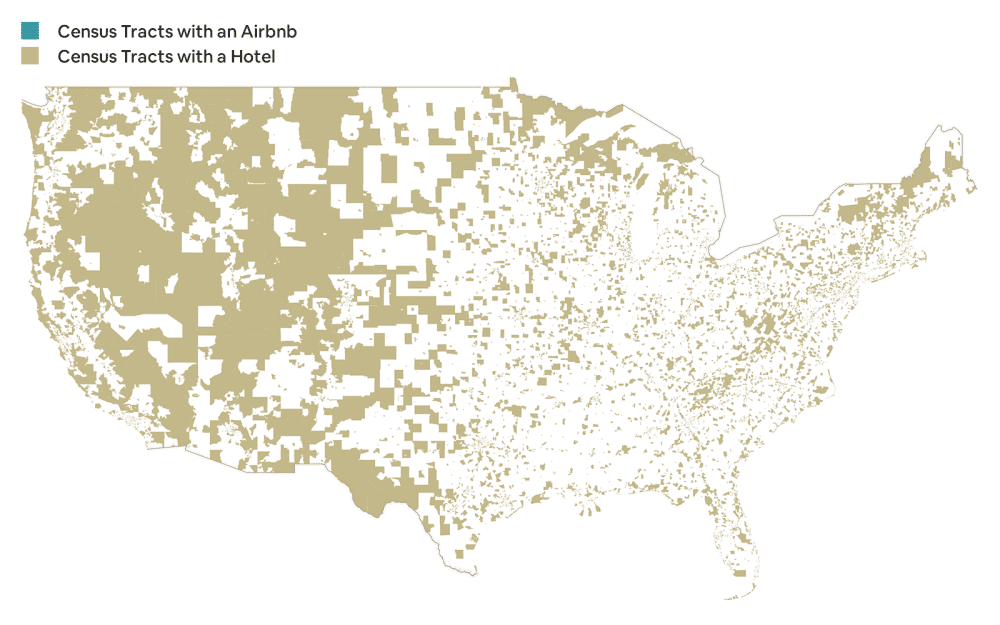In the United States, Airbnb finds itself at the center of a battle against short-term rental restrictions. This struggle is no longer confined to major urban centers; it has extended to key vacation rental markets as well. For instance, in June 2022, the Steamboat Springs City Council enacted a ban on new short-term rentals across most of the town. Additionally, a ballot measure was introduced to tax the industry at 9%, with the revenue directed toward funding affordable housing initiatives.
Airbnb’s Map: Showcasing Accommodations in the Absence of Hotels
Against this backdrop, Airbnb has released a compelling map that aims to showcase its supply of accommodations in areas where traditional hotels are scarce. The map serves a dual purpose: demonstrating the company’s role in offering lodging alternatives where hotel options are limited and highlighting how this presence drives traveler spending and supports local economies.
Economic Benefits and Boosting Local Businesses
In 2022, Airbnb hosts in the US welcomed over 44 million guest arrivals in areas without traditional hotels. This represents a significant portion of the hospitality sector that may have been overlooked without Airbnb’s platform. These bookings alone generated over $10.5 billion in host earnings and contributed to additional economic activity through guest spending.
The study, utilizing data from Airbnb and OpenStreetMap, reveals that Airbnb’s influence is particularly felt in communities where hotels are not present. By filling the gaps in hospitality, Airbnb has not only created economic opportunities for hosts but also provided a boost to local businesses. Guests staying at Airbnb listings often support local establishments such as diners, shops, tours, museums, and attractions, stimulating the economies of smaller cities and towns that might have been overlooked by travelers.
Expanding Travel Options and Accessibility
The study found that in approximately 65 percent of US Census tracts in 2022, Airbnb listings existed in areas with no hotel presence. This indicates that Airbnb offers travelers the opportunity to explore a wide range of destinations that would have been inaccessible with traditional hotel accommodations. Unlike hotels, which are usually concentrated in high-traffic areas, Airbnb’s extensive distribution allows travelers to experience the charm and culture of less-traveled locales.
Potential Reasoning Flaws and Issues
While Airbnb’s widespread presence suggests a positive shift in the hospitality industry, it is important to consider potential reasoning flaws and underlying issues that may be hidden behind this positive picture. Let’s examine some of these concerns:
- Neglecting Negative Community Impact: The economic benefits highlighted by Airbnb may overshadow potential negative impacts on communities, such as housing shortages and increased rents due to the conversion of properties into short-term rentals.
- Overlooking Regulatory Issues: Some short-term rentals listed on Airbnb operate in a legal gray area, with regulations and zoning laws that may restrict or prohibit short-term rentals. Operating without proper permissions can lead to legal complications.
- Assuming Net Positive Economic Activity: While Airbnb’s presence can boost local economies, it is essential to examine whether this economic activity shifts spending from other areas, rather than creating entirely new economic growth.
- Equating Presence with Preference: The existence of Airbnb listings in areas without hotels does not necessarily indicate a preference for Airbnb over traditional hotels. Other factors, such as cost or limited hotel options, may influence guest choices.
- Overstating Accessibility: While Airbnb may technically offer accommodations in more places, not all of these locations may be popular tourist destinations. It is important to consider whether the increased accessibility aligns with traveler preferences.
- Underestimating Environmental Impact: The environmental consequences of Airbnb’s growth, including increased tourism in previously quiet areas, must be taken into account. Overcrowding and strain on local resources can lead to environmental degradation if not managed sustainably.
Each of these potential flaws emphasizes the need for a comprehensive analysis to fully understand Airbnb’s impact on the hospitality industry and local communities. By critically examining these concerns, we can work towards a balanced and sustainable approach to accommodation and travel.









![Trump-Era Policies Fuel Travel Uncertainty: Fewer Canadians, Europeans to U.S.—Fewer Americans to Europe [Early Data]](https://www.rentalscaleup.com/wp-content/uploads/2025/04/Trump-Era-Policies-Fuel-Travel-Uncertainty-Fewer-Canadians-Europeans-to-U.S.—Fewer-Americans-to-Europe-Early-Data-150x150.jpg)
